The media-overexposed battle coming to Southwest Airlines’ headquarters will impact its future Hawaii flights. As its activist investor pushes for changes within Southwest’s board, leadership, and operations, many wonder if the airline’s Hawaiian routes are first on the Love Field chopping block.
What’s clear is that Southwest is under unprecedented pressure, and the decisions made in the coming weeks will reshape how—and where—it operates in Hawaii.
Hawaii can’t get free of Southwest’s corporate drama.
Southwest’s entry into Hawaii flights was nothing short of disruptive. The airline brought competition to a market dominated by over-priced carriers, offering Hawaii travelers new, more affordable options.
But despite that fanfare from five years ago, Southwest’s Hawaii routes have not delivered the financial returns the airline hoped for. The costs associated with flying to the islands and the operational complexities of its mainland and interisland service models have created challenges that Southwest’s leadership has struggled to navigate.
For many in the industry, including its irate investor, Hawaii has become the “gaudy” symbol of what’s wrong with Southwest’s current strategy. Elliott Management, which has a $1.9 billion stake in the airline, believes that the Hawaii market—and routes like interisland flights—are loss leaders that should be cut or minimized to restore profitability. Their push for a more streamlined, efficient airline model places Hawaii in a highly uncertain position.
One commenter noted, “Southwest’s Hawaii flights seemed great at first, but I’ve noticed fewer options and higher prices. If they scale back, it’s going to make flying to the islands even harder.” Many who depend on affordable flights to and within the islands echo this sentiment.
Southwest’s resistance to change, and the December showdown.
Despite the pressure, Southwest has remained publicly defiant, dismissing the need for a vote to replace its board or CEO Bob Jordan. The company has maintained that they’ve already engaged with enough shareholders to ensure that Elliott’s push for leadership change won’t succeed. However, the reluctance to hold a formal vote leaves many questioning whether Southwest is as confident as it appears.
The December 10 shareholder meeting looms large. While Southwest insists this is all unnecessary, the stakes couldn’t be higher. At the heart of this battle is whether Southwest should continue to operate as a low-cost carrier with wide-ranging routes or pivot to a more traditional airline model, even focusing on hub-and-spoke type operations and cutting loss-making routes like Hawaii.
For the islands, what is at stake looms large.
The future of Hawaii flights: what to expect.
Southwest’s current model, which includes direct flights from various West Coast cities to Hawaii and a robust interisland network, may soon be a thing of the past. If Elliott has its way, we can expect Southwest to concentrate its Hawaii operations around key focus gateways, like Las Vegas, Oakland, and possibly Phoenix. These are central to accessing Southwest’s larger network and could provide more streamlined, cost-effective service to Hawaii.
However, the same can’t be said for interisland flights, which are expected to face significant reductions. Operating flights between the Hawaiian Islands has proven costly and complicated, and Southwest will unlikely continue to commit resources to routes that don’t align with their broader restructuring efforts.
Another resident commenter shared, “The interisland flights have been a huge help, but I wouldn’t be surprised if they cut back. I just hope it doesn’t mean we’re heading to the highest fares ever with less competition.”
Southwest has hinted at these potential changes, though nothing has been formally announced. Their move towards a more legacy-style airline model seems to be a direct response to their financial pressures, and Hawaii is likely to see the effects sooner rather than later.
Fewer choices and higher prices than ever?
Reducing Southwest’s Hawaii routes would inevitably mean fewer options and higher prices for travelers. The recent consolidation, with Alaska Airlines acquiring Hawaiian Airlines, further serves to reduce market competition. The competitive landscape that Southwest helped reshape when it entered the Hawaii market could return to its pre-Southwest state or worse, with higher fares and fewer choices than ever for island travelers.
Another comment noted, “If Southwest pulls back, we’re going to see fares skyrocket. They were the only thing keeping prices down, especially for locals flying between islands.”
Beyond the immediate concerns for travelers, the broader implications for Hawaii’s tourism industry are significant. Tourism to Hawaii relies heavily on affordable, accessible flights, and if Southwest reduces its service, the ripple effects could be felt throughout the islands.
Fewer flights could mean fewer visitors, hurting local businesses, from hotels and restaurants to activities and retail. Southwest is also the event sponsor of the Kilohana Hula Show at the Waikiki Shell and Sunset on the Beach movie nights at Waikiki. Whether they will continue these community events if service is pulled back remains to be seen.
The coming weeks will be critical for Southwest, its shareholders, and the future of Hawaii travel. As the company grapples with the demands of its investors and the realities of its financial situation, Hawaii’s travelers and residents are left to wonder what will become of the affordable travel options we’ve all come to rely on.
Conclusion: Hawaii flights at a crossroads.
As Southwest prepares for the decisive December meeting, the future of its Hawaii routes hangs in the balance. Whether the airline remains committed to the islands or chooses to scale back operations, one thing is sure: big changes are on the horizon. Both travelers and residents should brace for a new era in Hawaii air travel, with the potential for fewer options and higher prices.
While Southwest fights to maintain control in its boardroom, the effects of its decisions will stretch far beyond Dallas. Hawaii’s skies may soon look very different as this corporate battle determines the fate of affordable flights to the islands.
What do you think is in the cards for Southwest Hawaii flights?
Get Breaking Hawaii Travel News
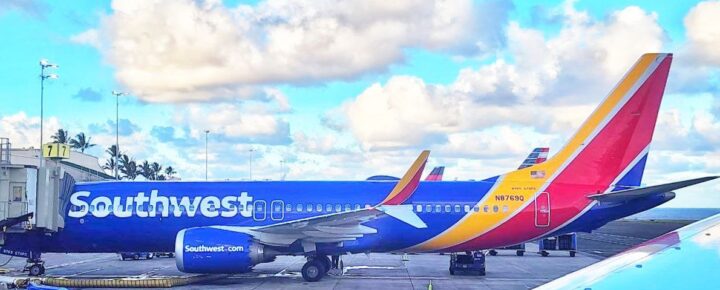
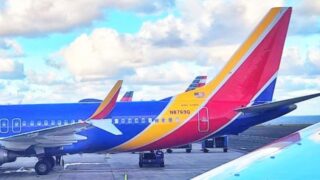

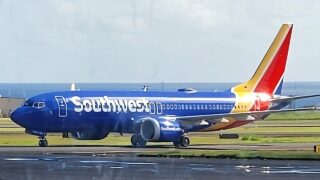

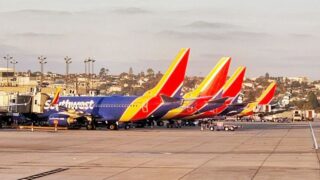
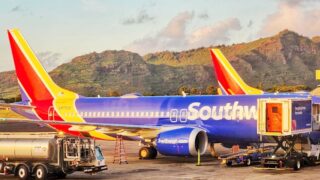
Southwest came in guns blazing into the Hawaii market, disrupting everything. Little did they know, this would help the merger between Hawaiian and Alaska be approved. Now they made their toughest west coast competitor on the mainland stronger.
Southwest has been struggling to fill their planes. The problem lies within their fleet. One type to cover both a popular route and a route that doesn’t require that same aircraft type. The 737-MAX 8 which holds 175 passengers would be great on a LAX to JFK. But, not so much on a LIH to HNL route. They gotta rethink their commitment to a single airframe…
Greedy investors are going to hurt Southwest.
Maybe worse!
I believe the greedy investor is going to hurt and bring down Southwest. Yes there have been problems but it’s getting fixed without this investor. Maybe they should have sold there shares and moved on.
It’s going to be terrible with all the changes.
Sorry Jay! My investment was made with the intention of earning a respectable return. It was never meant to be a charity donation! Economics 101 is where this information is taught. If SW can not earn a profit, investors like myself will campaign for corporate takeover! Show us the money!
Investments are not charitable donations. Investors expect a return on the investment. If the airline is operating at a loss on these routes, either the pricing needs changing or the loss eliminated. Show us the money!
No airline can afford to operate flights at a loss. Hawaii is a unique situation. We’re an island state with notoriously poor infrastructure. We’re forced to rely on interisland flights because everything is so Honolulu-centric.
The financials of operating interisland service just don’t work. They don’t work for Southwest. They don’t work for Hawaiian. They don’t work for Mokulele. And, they didn’t work for Aloha.
Hawaii and the Federal government need to work out a unique subsidy to keep the costs for island residents affordable, while not driving the airlines operating the service into bankruptcy. The EAS, as currently written, does not do that.
The legislature killing off the ferry idea was/is a huge issue. Every other Island chain has ferries, even Alaska has a very extensive ferry network to serve all their islands.
This is Hawaii where the almighty $ talks while common sense and resident’s welfare walks. The Airlines and rental car agencies made sure it failed. Don’t listen to any other excuses.
It will be a tragedy if Southwest leaves the interisland market. They truly helped keep fares affordable.
I am afraid that the Alaska Hawaiian cabal will immediately jack up interisland ticket prices that will make travel too expensive.
For some people who need to go to Honolulu for medical purposes it may be cheaper to just stay home and die. 😯
It is too bad the short sighted leaders, businesses and environmentalists killed the Superferry in 2009.
Cutting routes might save them money short term, but they’ve spent five years and a lot of effort to build goodwill here. Not sure that losing that wouldn’t be a long-term mistake.
I get I Elliott’s perspective. Hawaii flights are expensive to run, and if they’re just losing money, fix it or get rid of them.
I always fly Southwest, even as prices have risen, in part for their bags fly free policy. That’s been a lifesaver for my family coming to Hawaii. I can’t imagine losing those flights or paying even higher fares. What’s going on could ruin that!
Why does it always seem like the first thing to go is Hawaii? We’re already dealing with enough high prices for our vacation expenses, now flights too? I’m worried about what this will mean for those of us who love to travel to Hawaii.
No one was more excited about SW than me. But honestly, I’ve noticed that Southwest’s flights to Hawaii haven’t been as affordable lately. So not sure if they will be missed as much as before. Sad.
Southwest was the game-changer when they entered Hawaii. I hope they don’t pull back. It’s been nice to have more affordable options. If they leave, it’s going to hurt everyone, but locals most.
Prices have nowhere to go.but up given the recent anticompetive merger with as. Just see high expensive it is to fly intra ak or wa. Hint i attended a polical event outside of seattle none of the pols from Mid eastern wa flew in. Yeah it was so expensive high eaners with millions in donatikns chose to drive 6 hrs with expensive gas and very higb mtns then pay ad $$$ to fly 1 way with at east a month notice.
The only way flying to hi will be cheap is if they let foreign airlines fly those routes.
For the sake of the general flying public, I hope southwest fails. When traveling to & from Hawaii, there are so many better choices than flying in the cattle car that is Southwest.
Have you tried flying alaska? Even tighter.
All the other airlines are tighter. Free bags. Boarding is different, but I don’t mind it.
Hawaiian will double its rates inter island if SW leaves. You realize that?
We have only flown HA and AA to/from Hawaii. We chose not to fly AS due to the equipment they use. Hopefully they don’t screw up HA’s equipment with the takeover.
That’s such a poor take … Get rid of the competition ? What could go wrong ? Oh yeah, higher prices since you will have less choice. This would benefit absolutely no one !!
At least if they stay in that market you have the choice to fly with them or not, having that choice is a good thing !
Drive up the competition? You still have AA, AS, HA and United that fly to and from Hawaii. Losing a poor airline such as southwest would not be a big deal
SW isn’t a poor airline….
Speak for yourself. My wife & I have flown to HI 7 times for basically free because of my SW CC points and their companion pass. They are changing their open seating policy next year, so flying coach on SW is going to be basically the same as every other airline. Hawaiian obviously have great large planes but a ride is ultimately just a ride when coming from the west coast.
If SWA pulls out of the inter island market, Hawaiian will return to $200 r/t as they did before SWA came in. Guaranteed.
The problem is that the cost to run intra island is probably $200 r/t so at those rates Hawaiian was probably breaking even.
What Southwest did was run flights at a loss to gain market share and covered the intra island losses in the rest of the network hoping to severally harm a competitor possible to the point of bankruptcy. That is the primary reason Alaska bought Hawaiian as their next stop was Ch 11. If intra island flights need to be priced below the cost to operate them then the state should apply for ESA funds to cover the difference.
Look, haven’t you guys noticed, there’s only one or two direct flight to Hawaii , the rest are all 2 ore 3 stops, and they have priced them selfs out of the market, oh well , to bad Southwest was a leader for many years , now this new stake holder wants to rip it apart, ( as its doing ) so long SW, it was a short love venture………
Simple,let Elliott put its mouth into action and run the airline for a year. If it was right,so be it, make the changes,if not then Elliott most pay damages to Southwest and divest itself from the airline. Put your money where your mouth is.
Not the way things work – if you screw up, you collect tons of money for being a failure. That’s what happens with CEOs + others at the top,
You are correct Klsd.
Hawaiian CEO Peter Ingram will be paid 13 million for destroying Hawaiian Air and laying off up to 1,400 non-union employees in the process.
The buyout is bad for workers and travelers- no synergy. What is the Pidgin word for failure?
One has to wonder if Southwest pulls back on its interisland flights there is a renewed call by the public (and its lawmakers) to keep the market “local” and try to once again exert protective measures to keep the market done by local entities.
(Yes, I know, Alaska now owns Hawaiian and that is not a local entity, but Hawaiian has not been owned by a majority of local interests for decades).
In other words, do we revert back to the time when lawmakers and leaders of this state would eschew any attempt by a mainland entity to come in and take over the interisland market, precisely because of the finickiness of their commitment, which seems to be playing out at Southwest regarding interisland service?